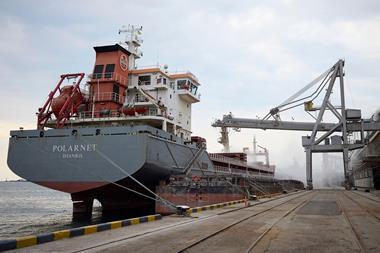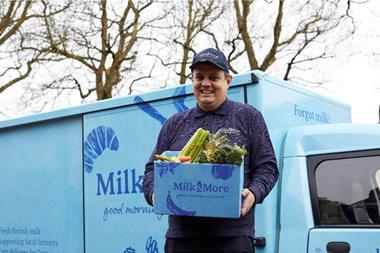
The destruction of the Nova Kakhovka dam in southern Ukraine last week will have major long-term effects on fruit & vegetable production, experts have warned.
The dam wall, located in the Kherson Oblast region – a significant fruit & vegetable production area – was destroyed on 6 June, with both Russia and Ukraine blaming each other for the shelling.
The incident caused massive flooding, which affected irrigated farmland in the region and severely devasted the vegetable sector.
Up to 80% of Ukrainian vegetables, including tomatoes, aubergines and cucumbers, are grown in Kherson Oblast, as well as fruits.
As the region sees little rainfall throughout the year, it relies on the dam’s water supply for irrigation.
Satellite images show thousands of parcels of land flooded, but the irrigation canals on which grains and produce farmers depend are quickly drying up.
The Kakhovka Canal supplied water to more than half a million hectares of land. Preliminary estimates by the Ukrainian Ministry of Agrarian Policy & Food point to a near £300m loss of biological resources, including agriculture and fishing.
The minister of Agrarian Policy & Food of Ukraine, Mykola Solskyi, told the UN yesterday it could take up to seven years to restore irrigation.
“This should be a priority. This is not only an agricultural and environmental issue, but also a social one. Farmers maintain social life in the surrounding villages, pay taxes, pay rent to landlords, who are mostly elderly people, for their shares,” Solskyi said.

“The full extent of the agricultural damage will be clearer as freshwater becomes scarce for irrigation upstream and downstream of the dam wall,” said Mintec analyst Harry Campbell.
But the consequences were expected to “pose significant challenges for the fruit & vegetable sector, affecting food security in the Kherson Oblast region and Ukraine” overall, he said.
The Ukrainian agriculture ministry estimated that around 10,000 hectares of farmland were underwater in Ukraine-held territory in the Kherson Oblast region – but the numbers are expected to be much higher in Russia-controlled territory.
The produce grown in the region was largely consumed domestically in Ukraine, though some was exported before the conflict, such as legumes and canned vegetables, particularly to EU countries, according to the Kherson Chamber of Commerce & Industry.
However, much of the region is now under Russian control, making it difficult to get exact data on the current exported values out of the Kherson region into the EU, Campbell said.
“According to market sources, this has resulted in Russian occupiers ensuring a lot of the produce is sold into Crimea and other Russian-controlled regions,” he added.
Both short- and long-term outlook for farmers looked “negative”, Campbell said. ”In the long term the issue is going to come when there is limited water availability to for irrigation. How badly it will be affected only time will tell.”
UN humanitarian relief co-ordinator Martin Griffiths also warned the knock-on effects of the dam rupture would have significant consequences for global food security, as Ukraine was one of the ‘bread baskets’ of the world.
The World Food Programme echoed there would be “problems for this year’s harvest and sowing for the next harvest” and that food prices were “likely to go up”.



















No comments yet